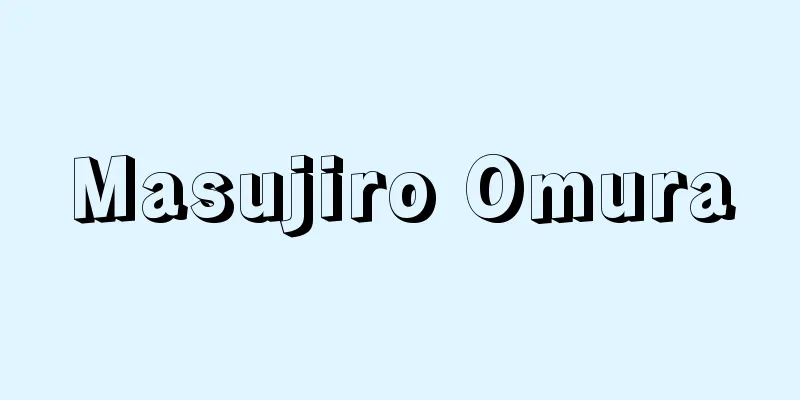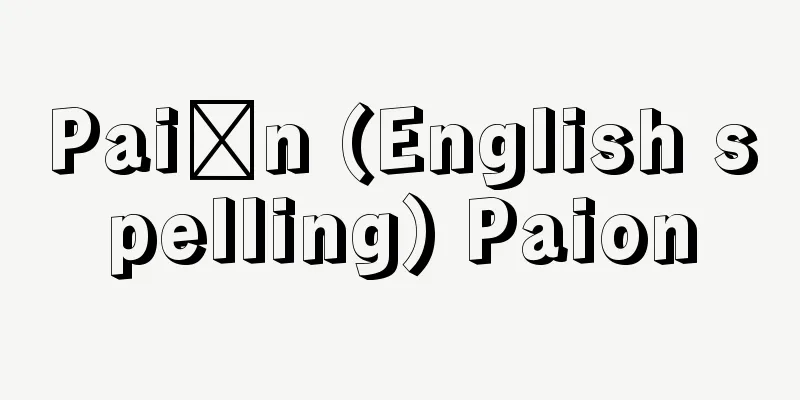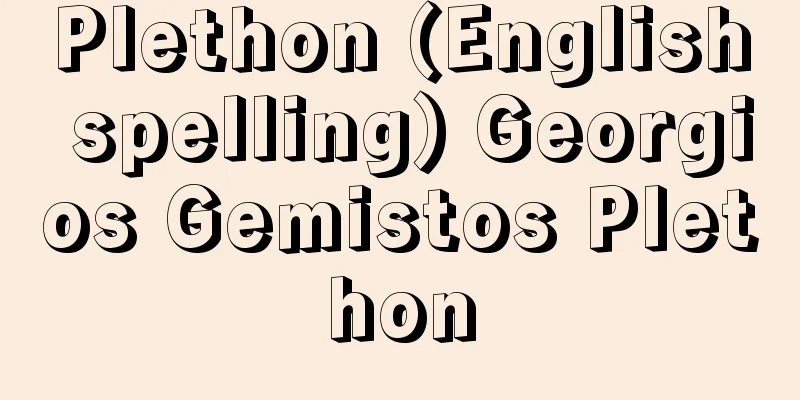Masujiro Omura

|
Year of death: November 5, 2nd year of the Meiji era (December 7, 1869) Year of birth: Bunsei 7.5.3 (1824.5.30) A politician during the Meiji Restoration period. A contributor to the construction of the Meiji Army. Son of doctor Murata Takamasu from Omura, Suo Province (Yamaguchi City), Chuzenji Village. His childhood name was Sotaro, later Ryoan and Zoroku. At the age of 19, he studied under the Dutch doctor Umeda Yusai, and the following year studied Chinese classics under Hirose Tanso in Bungo (Oita Prefecture). At the age of 23, he entered Ogata Koan's Tekijuku in Osaka, where he studied Dutch studies and medicine and served as the school's principal. During this time, he visited Nagasaki and studied under the renowned doctor Okuyama Seishu. At the age of 27, he returned to his hometown to support his parents and opened a medical practice, but it was unsuccessful, so he was welcomed by the Uwajima Domain, where he taught the translation of Western military books and the construction of warships. In 1856 (Ansei 3), he moved to Edo and opened the Kyukodo school, where he assisted a professor at the Shogunate's Bansho Shirabesho (Institute for the Investigation of Foreign Documents) before becoming a professor at the Kobusho (Japanese Military Academy). During this time, he studied English under Hepburn. Hearing of his fame, the Choshu clan ordered him into service in 1860. After returning to the clan, he taught military science and was involved in military reform. In the Choshu War of 1866, he annihilated the Shogunate forces as the Iwamiguchi Chief of Staff. When the Boshin War broke out in January 1867, he went to Kyoto as part of the anti-Shogunate forces. He was ordered to assist the Meiji government's Military Defense Bureau as a judge, and was in charge of military administration. In April of the same year, he went to Edo and participated in the suppression of the Ueno Shogitai and the pacification of Oshu and Hokuetsu. He was able to grasp the war situation from a comprehensive perspective, and his military strategies suggested that he was sure to win even before the battle. When Saigo Takamori saw that Omura's army was not making any progress, he followed the advice of his subordinates and led his troops east to offer to pacify the battlefield. Omura admonished Saigo, and Goryokaku fell before Saigo arrived in Aomori. Saigo was impressed by Omura's insight and returned home, saying, "I made a mistake and would be ashamed to meet him face to face." In October of the same year, he became Vice Governor of Military Affairs and pacified Hakodate (Hakodate). This marked the end of the Boshin War, and he received a permanent stipend of 1,500 koku for his military achievements. In 1869 (Meiji 2), he became Minister of War. In order to thoroughly reform the military system, he proposed that the army follow the example of France and the navy of Great Britain, that the feudal domains' troops be disbanded, that swords be banned, and that a conscription system be adopted. As a result, on September 4, 1869, while traveling in the Kyoto-Osaka area, he was attacked by eight opposing samurai, and died as a result. <References> Biography Publishing Committee (ed.) "Omura Masujiro," and Itoya Toshio (edited.) "Omura Masujiro" (Kageyama Koichiro) Source: Asahi Japanese Historical Biography: Asahi Shimbun Publications Inc. About Asahi Japanese Historical Biography |
|
没年:明治2.11.5(1869.12.7) 生年:文政7.5.3(1824.5.30) 幕末維新期の政治家。明治陸軍建設の功労者。周防の鋳銭司村字大村(山口市)の医師村田孝益の子。幼名は惣太郎,のち良庵,蔵六。19歳で蘭医梅田幽斎に学び,翌年豊後(大分県)の広瀬淡窓に漢籍を学ぶ。23歳のとき大坂の緒方洪庵の適塾に入り,蘭学,医学を修め,塾長を務めた。この間,長崎を訪れ名医奥山静叔に学ぶ。27歳で父母を養うため帰郷して医を開業したが振るわず,宇和島藩に迎えられて西洋兵書の翻訳,軍艦製造等を指導。安政3(1856)年江戸に出て鳩居堂を開塾し,幕府蕃書調所教授手伝を経て講武所教授に就任。この間ヘボンに英語を学んだ。名声を聞いた長州藩は万延1(1860)年,出仕を命じた。帰藩して兵学を教え,兵制改革に携わる。慶応2(1866)年長州戦争には石見口の総参謀として幕府軍を壊滅させた。同4年1月,戊辰戦争が起こると,討幕軍として上洛した。維新政府の軍防事務局判事加勢を命ぜられ,軍政事務を担当,同年閏4月江戸に出て,上野彰義隊討伐,奥羽・北越の平定作戦に携わった。 総合的な視点で戦局を捉え,軍略は戦う前から必勝の成算をうかがわせるものがあった。西郷隆盛は大村の軍が進まないのをみて,部下将士のすすめるままに兵を率いて東上し戦地平定を申し出た。大村は西郷を諫め西郷の青森到着前に五稜郭が陥落。西郷は,大村の卓見に感服し,「我誤てり面を合はすに恥づ」とそのまま帰郷。同年10月軍務官副知事となり箱館(函館)を鎮定。ここに戊辰戦争は終結し,その戦の功により永世禄1500石を受ける。明治2(1869)年兵部大輔。軍制を徹底的に改革するため,陸軍はフランス,海軍はイギリスにならうこと,藩兵解隊,帯刀禁止,徴兵制度の採用等を建白。このため2年9月4日京阪地方旅行中,反対派士族の8人に襲われ,それがもとで死去した。<参考文献>伝記刊行会編『大村益次郎』,絲屋寿雄『大村益次郎』 (影山好一郎) 出典 朝日日本歴史人物事典:(株)朝日新聞出版朝日日本歴史人物事典について 情報 |
Recommend
Cranberry - cranberry
An evergreen wisteria plant of the Ericaceae fami...
Over-cultivation
…Desertification is considered to be a global pro...
Cirrhopetalum
... The genus Bulbophyllum is characterized by le...
Filius Dei; Son of God
In the Old Testament and Judaism, the foundation o...
Phrase - く
[1] (noun) ① A meaningful section of words that fo...
Uzbekistan - Republic of Uzbekistan (English spelling)
A republic located in Central Asia. It was former...
paedagogus
…Through contact with the Hellenistic world, Gree...
Purulent inflammation
…(3) Catarrhal inflammation Catarrhal inflammatio...
Myrica gale (English spelling)
…[Nitta Aya]. . . *Some of the terminology that m...
History of New Mundo (English: History of New Mundo)
…He traveled widely in the Viceroyalty of Peru, g...
Sulfur Islands
A volcanic archipelago on the Mariana Ridge, locat...
Cognitive engineering
An engineering technology that uses the results of...
Planned birth - elective induction of labor
Induction of labor and the planned termination of ...
Kinobori (tree climbing) - Kinobori (English spelling) Australian treecreeper
A general term for birds belonging to the Climacte...
Kettlewell, HBP (English name) Kettlewell HBP
…In the UK, many entomologists had already notice...









